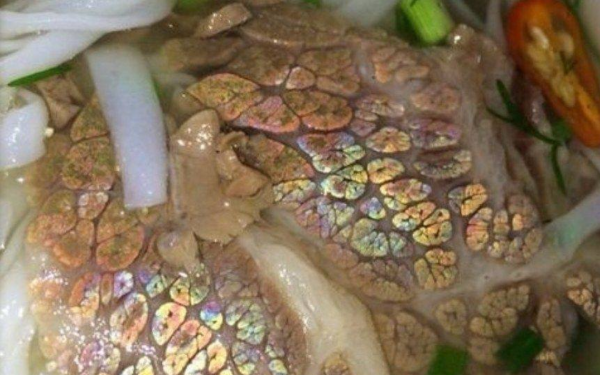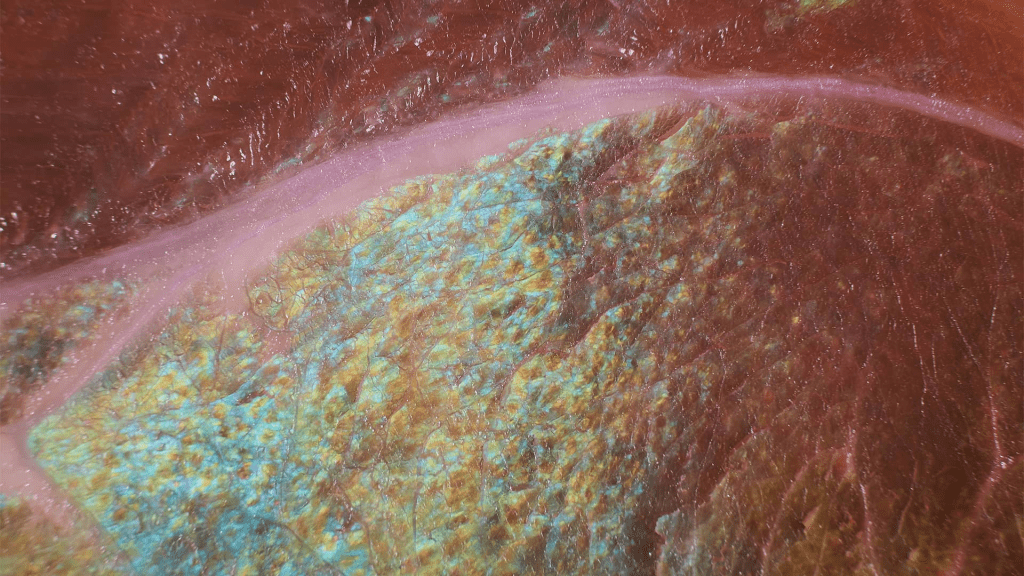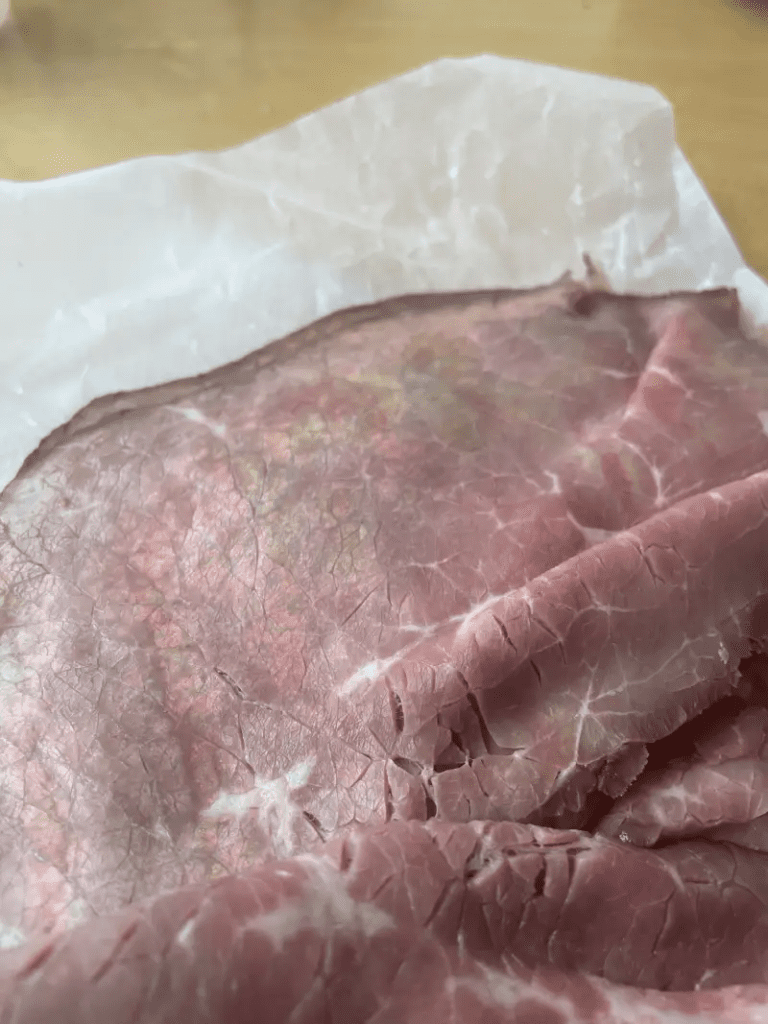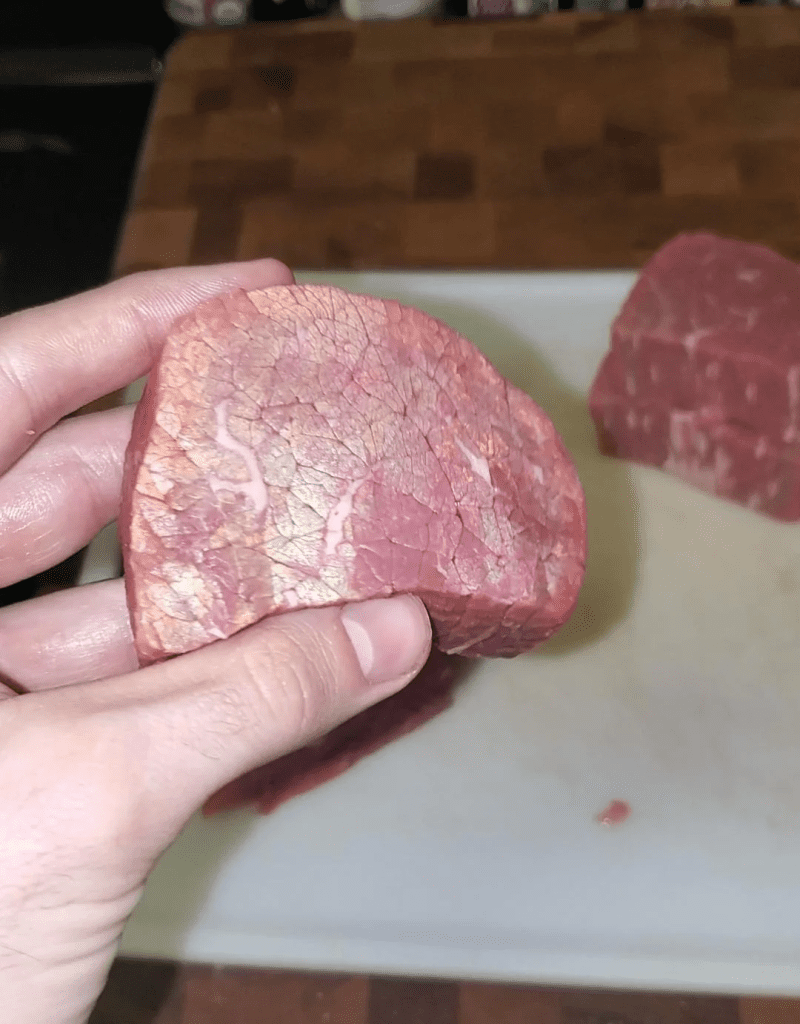Have you ever opened the fridge, pulled out a slice of roast beef, and noticed it gleaming with a rainbow of colors? It might look strange at first glance, and your initial thought might be, Has this gone bad? The truth is, this colorful shimmer is not a sign of spoilage—it’s a fascinating display of science in action. Let’s break down why certain cuts of beef and deli meats show this iridescent effect, when it’s safe to eat, and how to tell if your meat is truly fresh.

What Creates the Rainbow Effect on Meat?
The shimmering rainbow you see on some meats comes from something called structural color. Unlike the natural pigments that give beef its usual red, pink, or brown tones, structural color occurs when light interacts with the physical structure of the meat.
In beef, the microscopic arrangement of muscle fibers can reflect and scatter light in such a way that it splits into different wavelengths—similar to how light refracts through a prism. This diffraction creates the colorful sheen that’s especially noticeable on thinly sliced roast beef, pastrami, or other deli meats when viewed under bright lighting.
Video: Why Does Meat Go Rainbow Coloured?
Structural Color in Nature
This effect isn’t unique to meat. You’ve seen the same phenomenon on butterfly wings, beetle shells, and peacock feathers. Those vibrant blues, greens, and purples aren’t created by pigment but by light bouncing off microscopic structures on the surface. In meat, smooth muscle fiber surfaces act like these natural structures, reflecting light in multiple colors.
The USDA even confirms that this rainbow effect is perfectly normal and doesn’t mean your food has gone bad.
Why Deli Meats Show It More Often

Not all meat surfaces are smooth enough to create visible iridescence. When meat is sliced with professional deli slicers, the blade leaves behind a flat, smooth surface that’s ideal for light diffraction. In contrast, meat cut by hand at home often has a rougher texture, which scatters light in different directions and reduces the effect.
Darker cuts, like roast beef, show it more vividly because their deep color absorbs some light, making the reflected colors stand out against the darker background.
Does Rainbow Color Mean Spoiled Meat?
Video: Rainbow steak, Why?
No—iridescence alone does not signal spoilage. The rainbow shimmer is simply light interacting with the meat’s fibers. However, there’s an important distinction: a pure rainbow effect is harmless, but a greenish cast could mean something else.
If the rainbow is accompanied by a slimy texture, sour smell, or grayish-green spots, that’s when you should be concerned. Fresh meat should smell mild, feel firm, and look consistent in color (aside from the rainbow effect).
Why Some Meats Look Greenish
Sometimes meat may have a slight green tint due to harmless pigment changes during cooking or processing. But if that green looks blotchy or is paired with an unpleasant odor, it could be bacterial growth. In that case, it’s best to throw it away rather than take a risk.
How Light and Storage Affect the Shine

Your kitchen lighting—or the bright fluorescent bulbs in grocery stores—can make the iridescence appear more intense. The smoother the cut and the more direct the light, the more striking the rainbow will look. Even some raw steaks may show it if the cut is particularly flat and the lighting hits just right.
That said, light won’t “create” freshness—it can only highlight what’s already there. Always trust your senses first.
Quick Tips to Check Deli Meat Freshness
- Smell: Fresh meat has a mild aroma. A sour or off smell is a red flag.
- Touch: It should feel firm and dry to the touch, not sticky or slimy.
- Look: The rainbow is fine, but gray, green, or brown spots could mean spoilage.
- Date: Always check the sell-by or use-by date and store meats at proper temperatures.
The Beauty of Food Science

The next time you notice a rainbow glimmer on your roast beef, you can appreciate it for what it is—light and biology working together to create a harmless, even beautiful, effect. As long as the meat smells fresh, feels right, and shows no other signs of spoilage, you can enjoy it without worry.
Conclusion
Rainbow colors on beef aren’t a warning sign—they’re a reminder of the fascinating ways light interacts with the world around us. Understanding structural color takes the mystery out of the shimmer, letting you focus on the flavor rather than the fear. So next time you layer that iridescent slice of roast beef onto your sandwich, you’ll know it’s not only safe but also a tiny science show right on your plate.


